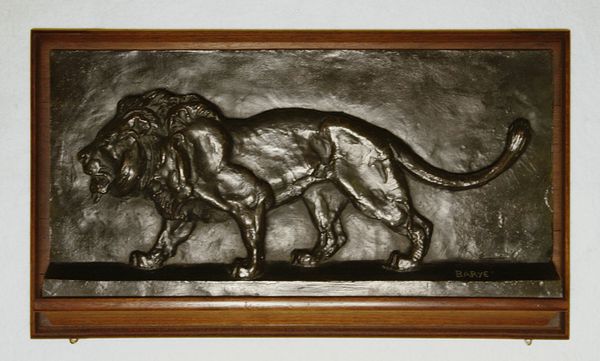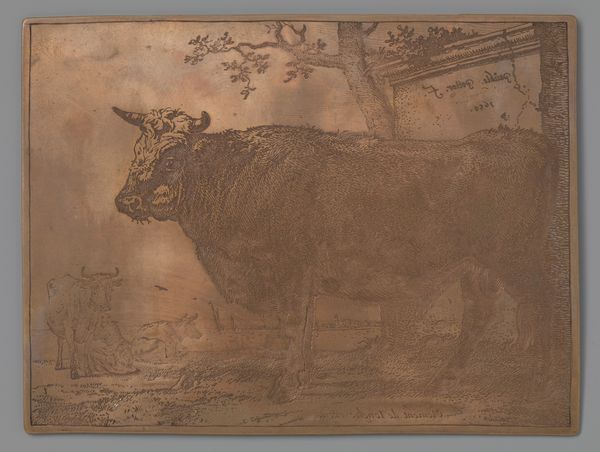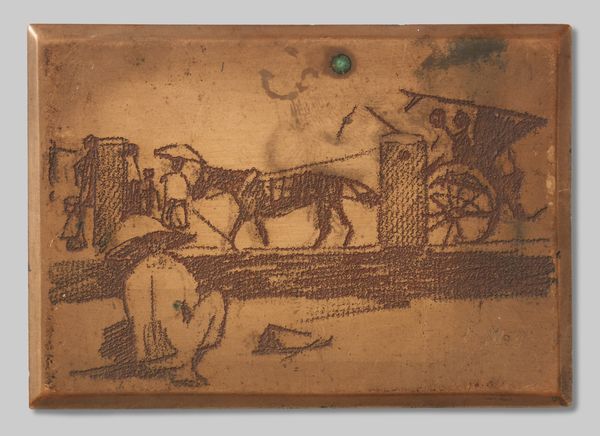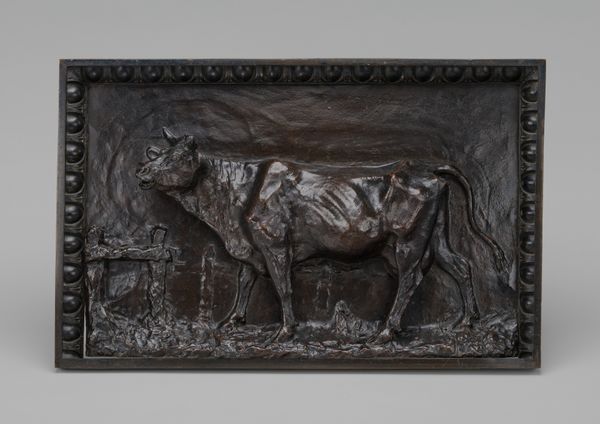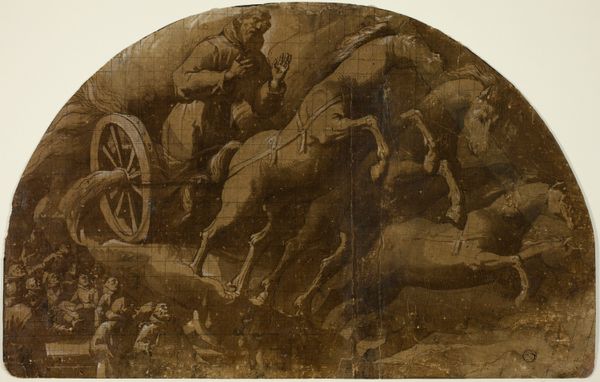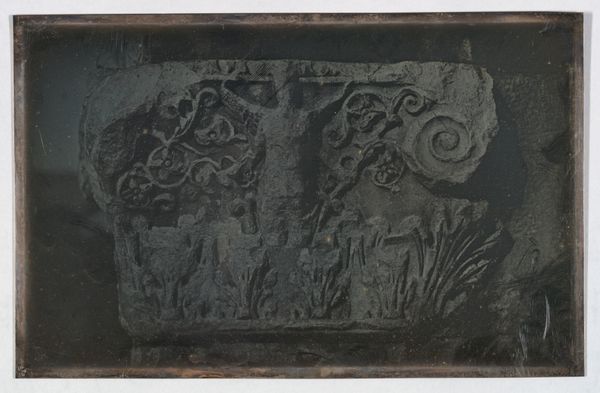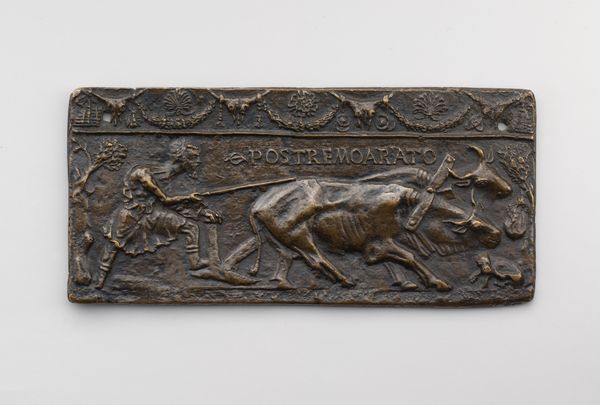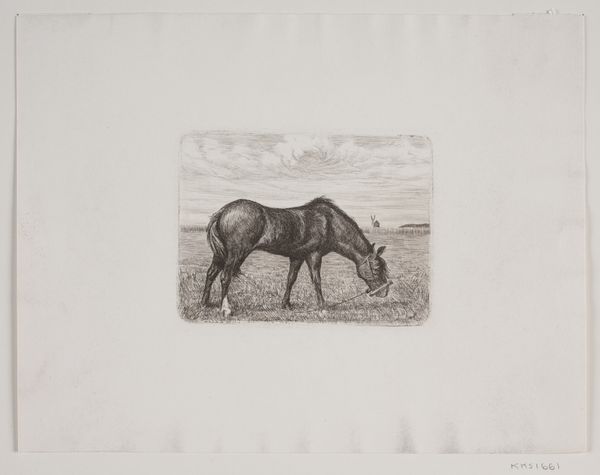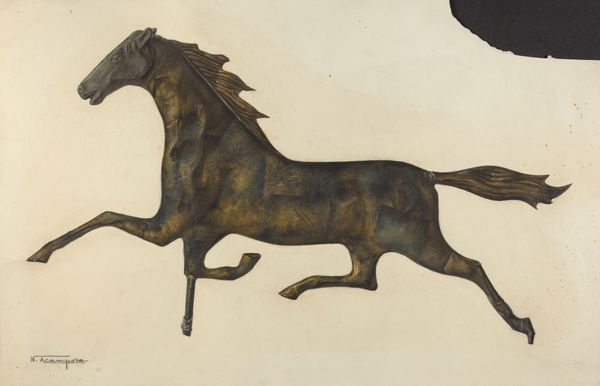
Woodblock for The Black Horse, from a General History of Quadrupeds c. 1790
0:00
0:00
drawing, print, woodblock-print, woodcut, engraving
#
drawing
# print
#
sculpture
#
landscape
#
woodblock-print
#
england
#
woodcut
#
engraving
Copyright: Public Domain
Editor: Here we have Thomas Bewick’s woodblock for “The Black Horse,” dating back to around 1790. It's fascinating to see the artwork in this form, almost like a fossil! It seems so tactile. What insights can you offer about this piece? Curator: Looking at this, I'm drawn to the labor and skill embedded in its creation. Bewick’s meticulous engraving into the end-grain of the wood is remarkable, right? This wasn’t just art; it was a commercial process. How do you think this affected Bewick’s work? Editor: I imagine the process of replication, using something like a printing press, had implications in accessibility for audiences, beyond the traditionally wealthy art patrons? Curator: Precisely. The "General History of Quadrupeds" itself served as an important study source, blurring the line between fine art and accessible educational material. The woodblock stands as both a tool and an artwork, shaped by industrial applications, with cultural resonance connected to 18th-century agrarian society. Editor: So, even the choice of wood as a material becomes significant because of its availability and functionality? Curator: Exactly! This isn't marble or bronze associated with high art, it’s a common, workable material, emphasizing the relationship between artistic expression, labor, and consumption. What does the impression of the horse convey to you in terms of the human-animal bond within this context? Editor: It feels like a celebration of rural life and labour through art! It's powerful to consider art not just as an image, but as the physical manifestation of work and cultural values. Curator: Indeed, seeing art in its materiality invites questions about accessibility and dissemination. The print-making process is such an under-discussed artform.
Comments
No comments
Be the first to comment and join the conversation on the ultimate creative platform.
